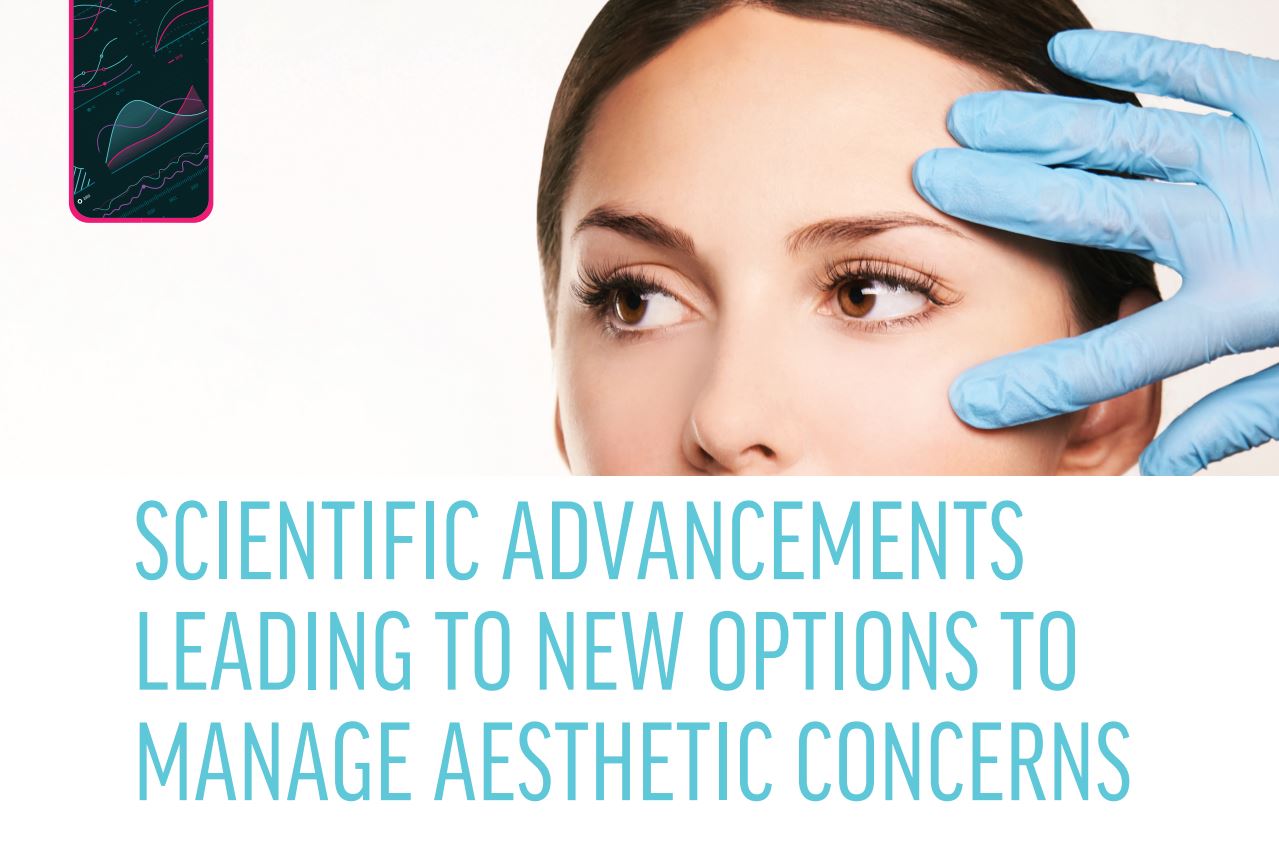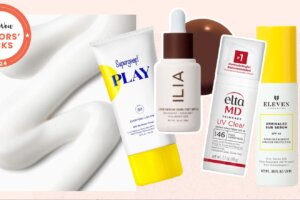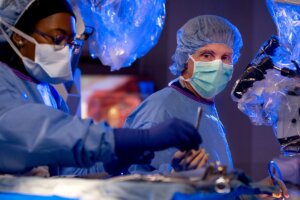Read Full Article HereScientific Advancements Leading to New Options to Manage Aesthetic Concerns
Updates on some of the latest developments in minimially invasive aesthetics. | Jacqueline Watchmaker, MD, FAAD
Hollywood stars are no strangers to plastic surgery, but these days, neither is your realtor or hairdresser. And while cosmetic procedures aren’t necessarily becoming more accessible (in fact, the cost of Botox has gone up), more and more people from all walks of life are beginning to see the value of taking care of their skin and are therefore willing to spend money on cosmetic procedures. Minimally-invasive procedures have gained the most popularity in recent years because they generally pose less of a risk and have shorter recovery times for patients. Advancements in cosmetic dermatology mean that, depending on the severity of the complaint, non-surgical procedures can offer patients satisfying results without going under the knife.
BOTTOM LINE
Given the impact of the expanding aesthetic medicine market and the public’s increasingly favorable outlook on cosmetic procedures, it is necessary for aesthetic physicians to understand and stay abreast of the latest scientific advancements leading to new options to manage aesthetic concerns. Minimally-invasive procedures won’t replace surgery, but continuous scientific breakthroughs mean conditions patients did have to go under the knife for will be treated easily and safely, with less down time and less risk.
Americans spent more than $8.7 billion on aesthetic plastic surgery in 2021—up from $6 billion in 2020.1 Although women age 55 and older remain a target demographic for cosmetic procedures, female and male patients as young as 20 or 30 years old are becoming increasingly aware of options to minimize and prevent the physical signs of aging. Millennials, defined as the generation of individuals born between 1981 and 1996, have emerged as one of the leading patient demographics seeking minimally invasive cosmetic procedures.2 Worldwide, millennials are more likely to consider preventative treatments compared to any other age-group. This “prejuvenation” movement, which refers to the increasing use of subtle treatments and therapies to slow the appearance of aging in younger patients, has emerged within the last five years, as Facetime and Zoom have become a larger part of our lives, causing people of all ages to be more cognizant of their appearance.
Some of the most common complaints patients of all ages have when seeking help from a cosmetic dermatologist are rhytides on the forehead and around the eyes and lips. Particularly in sunny regions like Arizona, patients often seek treatment to reverse photoaging and actinic keratoses. So, it is no surprise that in 2020, the top five minimally-invasive cosmetic procedures in the US were: botulinum toxin Type A (4.4 million), soft tissue fillers (3.4 million), laser skin resurfacing (997,245), chemical peel (931,473), and intense pulsed light (827,409).3 One important distinction is that older patients typically request hyaluronic acid filler to treat deep-set wrinkles and volume loss in the cheeks and along the jawline, while younger patients often make appointments for “Baby Botox”4 (which refers to very light dosing of a neuromodulator that softens wrinkles but maintains the natural movement of the face) and light laser treatments to stimulate collagen.
In addition to the organic uptick in patient interest in aesthetic procedures, the dermatology community has done a good job of raising awareness of skin cancer prevention from a medical and cosmetic standpoint. Given the impact of the expanding aesthetic medicine market and the public’s increasingly favorable outlook on cosmetic procedures, it is necessary for aesthetic physicians to understand and stay abreast of the latest scientific advancements leading to new options to manage aesthetic concerns. A better understanding of these advancements will promote an elevation in practice success and, most importantly, the quality of patient care and skin health outcomes.
A BRIEF HISTORY OF AESTHETICS
Throughout history people have tried to improve their attractiveness and to enhance their beauty, and dermatologists have often led the charge.5 In 1871, Tilbury Fox described the use of 20% phenol to lighten the skin, which became the first chemical peel, a technique that Paul G. Unna refined in 1882 when he described the properties of salicylic acid, resorcinol, phenol, and trichloroacetic acid.6
The first injections for tissue augmentation were described in the last decade of the 19th century. In 1893, Franz Neuber was the first physician who used autologous fat as filler material.7 Robert Gersuny recommended the use of paraffin 6 years later, in 1899. As shown later, the choice was a mistake, as a foreign-body reaction to the exogenous paraffin led to granulomas.
Nearly 100 years later, American physicist Theodore Maiman was the first to develop a laser used for clinical application.8 In 1960, he introduced a laser composed of a ruby rod emitting light energy at 694nm.9 In 1963, American surgeon Leon Goldman, a pioneer in applying lasers to dermatologic conditions, reported on the effects of Maiman’s ruby laser in the selective photodestruction of pigmented skin elements such as black hair. However, prior to the 21st Century, many laser treatments weren’t suitable for rejuvenating darker Fitzpatrick skin types rich with melanin, as exposure caused incidences of hypo- and hyperpigmentation.
Obviously we’ve come a long way from injectable paraffin, and most modern lasers are safe and effective for people of all skin types (when in experienced hands). Nevertheless, dermatologists are continuously looking for ways to perfect aesthetic procedures for patients. Similar to the new iPhone, more advanced medical technology means devices are easier for physicians to use and treatments are safer and require less down time for patients than prior procedures with similar results.
NEW APPROACHES TO TREATING AESTHETIC CONCERNS
Body Contouring. Some of today’s most exciting new approaches to treating aesthetic concerns emphasize rejuvenation of the body, not just the face. Several of these solutions address cellulite, a term used to characterize the cosmetically distressing, altered (e.g., dimpled, padded, peau d’orange) topography of skin located most commonly on the outer thighs, posterior thighs, and buttocks.10 Cellulite can affect anyone, but is most prevalent in adult females. In fact, between 80% and 90% of women of all races have cellulite. Patients often turn to physicians for help with cellulite, because although losing body fat and gaining muscle mass through good nutrition and exercise may help to reduce its appearance slightly, cellulite cannot be cured by diet and exercise alone.
Dermatologists have long offered solutions for cellulite. Topical creams containing retinol or caffeine can increase blood flow to the affected area, and radiofrequency devices (e.g., BTL Vanquish, Thermi) are used to reduce the connective tissue in the affected area and increase blood flow to reduce the appearance of cellulite.11 However, these approaches are limited as the results are reversible and may only last weeks, days, or even hours.
Brand new for cellulite is Revelle Aesthetics’ Avéli, an FDA-cleared device that temporarily reduces the appearance of cellulite dimples on the buttocks and thighs in a single in-office procedure using a targeted, verifiable subcision method.12 Avéli conducted a clinical study wherein subjects were evaluated following one session and found that the appearance of their cellulite had greatly improved over the course of three months. However, Avéli is not intended to treat laxity or fat.
Another new body contouring solution is Poly-L-lactic acid (PLLA), or Sculptra Aesthetic. Sculptra is a dermal filler injection that has been on the market for some time, but was previously used to help stimulate skin’s natural collagen production to give the face a more youthful-looking appearance. Dermatologists have recently been using Sculptra to augment the buttocks and treat cellulite of the butt and thighs.13 An alternative to the Brazilian butt lift, Sculptra stimulates collagen production in the deeper layers of the skin to enhance the curve and shape of the buttocks without surgery or a high risk of complications. Among other factors, an individual dermatologist’s experience level can impact the results of this procedure, however, many patients endorse this treatment and believe it rounds and lifts the buttocks with minimal risk.
FACE & NECK
Among the unesthetic disorders, laxity, especially in the skin, is one that has great impact on self esteem and the function and quality of life.14 Lax tissue is the result of biomolecular changes, and damage done to collagen fibers. This can simply be due to the natural aging process, and/or extrinsic factors such as genetics, diet, lifestyle, sun exposure, stress, and smoking. While plastic surgery remains the gold standard for correcting acute laxity of skin on the chin, eyelids or neck, less invasive solutions continue to emerge for preventative or mild cases.
FDA-cleared Sofwave is a new device that generates high Intensity, micro-focused ultrasound pulses, causing controlled thermal damage by elevating the temperature to 60-70°C in the dermis layer, while sparing the epidermal layer using surface cooling.15 The intended result is to rejuvenate collagen fibers and improve the overall appearance of facial lines and wrinkles, and lift the eyebrows, submental, and neck area.16 Sofwave treatments are noninvasive and quick, typically lasting about 30 to 45 minutes. Most patients showed significant improvement after one treatment. However, clinical trials are ongoing to further determine safety and efficacy of Sofwave treatment.
Acne is another common skin condition that is not only uncomfortable, but can have a significant impact on a patients’ mental health and overall well-being. Acne affects up to 50 million Americans annually,17 usually beginning at puberty and sometimes lasting well into adulthood. Traditional acne treatments depend on the severity of the condition, but can include topical skin treatments, oral antibiotics, hormonal treatments, or a combination of all of these options.
Chemical peels and laser therapy have previously been used by cosmetic dermatologists to treat acne scars, but AviClear, a new FDA-cleared laser treatment by Cutera, is the first and only device that targets sebaceous glands for mild to severe acne.18 AviClear works by using a 1726nm wavelength to target and suppress the sebaceous gland safely and effectively. Preliminary clinical results demonstrate a decrease in acne noted in the treatment area at 3, 6, and 10 months follow-up.19
COSMECEUTICALS
As technology advances and cosmeceuticals continue to become more sophisticated and more widely used, the medical profession must continue to take an active role in familiarization with these products and in educating patients about the benefits and risks.20 Cosmeceuticals represent a newer category of products placed between cosmetics and pharmaceuticals that are intended for the enhancement of both the health and beauty of skin.
Many dermatology practices throughout the country have launched online stores that offer a curated line of dermatologist-approved products from a trusted source. These topical products are best used as part of a good skin care regimen and in combination with other aesthetic treatments like lasers or neuromodulators to help maintain results.
THE FUTURE OF AESTHETICS
Aesthetic medicine is becoming a vital and popular branch of medicine.21 Minimally-invasive procedures won’t replace surgery, but continuous scientific breakthroughs mean conditions patients did have to go under the knife for will be treated easily and safely, with less down time and less risk.
1. https://www.medestheticsmag.com/news/news/21965346/2022-plastic-surgery-trends-according-to-the-aesthetic-society
2. https://jddonline.com/articles/minimally-invasive-facial-cosmetic-procedures-for-the-millennial-aesthetic-patient-S1545961620P0100X/
3. https://www.plasticsurgery.org/documents/News/Statistics/2020/plastic-surgery-statistics-full-report-2020.pdf
4. https://www.ncbi.nlm.nih.gov/pmc/articles/PMC6489637/
5. https://pubmed.ncbi.nlm.nih.gov/23884484/
6. https://pubmed.ncbi.nlm.nih.gov/32080904/
7. https://www.ncbi.nlm.nih.gov/pmc/articles/PMC5694962/
8. Gianfaldoni S, Tchernev G, Wollina U, Fioranelli M, Grazia Roccia M, Gianfaldoni R, et al. An overview of laser in dermatology: the past, the present and the future (?) Open Access Maced J Med Sci. 2017 Jul 25; 5(4):526–530. Published online 2017 Jul 23.
9. Maiman TH. Stimulated optical radiation in ruby. Naturevolume. 1960 Aug 6;187:493-494.
10. https://www.ncbi.nlm.nih.gov/pmc/articles/PMC5234561/
11. https://www.plasticsurgery.org/news/blog/what-is-the-best-treatment-for-cellulite
12. https://practicaldermatology.com/news/revelle-aesthetics-rolls-out-aveli-to-treat-cellulite?c4src=home:feed
13. https://clinicaltrials.gov/ct2/show/NCT04124692
14. https://www.ncbi.nlm.nih.gov/pmc/articles/PMC4631236/
15. https://clinicaltrials.gov/ct2/show/NCT04146584
16. https://sofwave.com/
17. https://www.aad.org/media/stats-numbers#:~:text=Sunscreen%20Vitamin%20D-,Acne,to%2050%20million%20Americans%20annually.&text=Acne%20usually%20begins%20in%20puberty,experience%20at%20least%20minor%20acne.
18. https://www.cutera.com/solutions/aviclear/
19. https://pubmed.ncbi.nlm.nih.gov/12210595/
20. https://www.ncbi.nlm.nih.gov/pmc/articles/PMC6188460/
21. https://www.ncbi.nlm.nih.gov/pmc/articles/PMC4271299/
Scientific Advancements Leading to New Options to Manage Aesthetic Concerns
August 30, 2022








